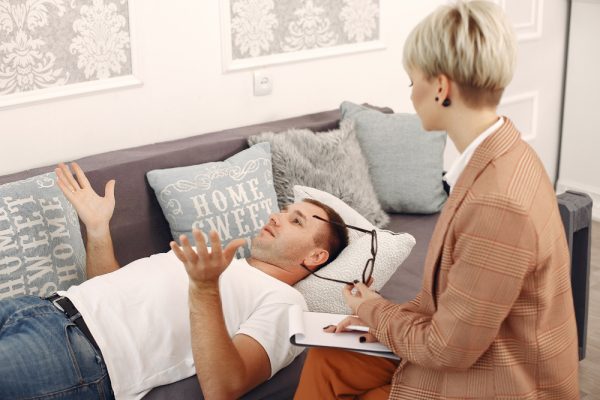
Anxiety disorders are common and treatable. However, not all therapies work the same way or fit everyone. Some therapies target thoughts. Others focus on behavior, the body, or past memories. Choosing what works depends on each person and the type of anxiety they are living with.
Let’s break down the best types of therapy for each type of anxiety condition, based on current research and clinical recommendations.
Why CBT Remains the Top Choice
Cognitive Behavioral Therapy, or CBT, is the most studied approach for anxiety. It helps people learn how their thoughts influence their emotions and actions. CBT teaches new ways to respond to anxiety without avoiding it or reacting in panic.
This type of therapy is effective for many forms of anxiety. That includes generalized anxiety disorder, panic disorder, social anxiety, and specific phobias. Studies have shown CBT works as well as medication for some people. For those with more severe symptoms, combining both can be even better.
In CBT sessions, people work with a professional therapist, like Sofia Wellness Clinic, to identify patterns in thinking. They learn to question the beliefs driving their fear or worry.
Targeting Triggers with Exposure Therapy
Exposure therapy works best when someone’s anxiety centers around a specific fear. This could be a fear of flying, public speaking, or certain places.
During exposure therapy, people face their fears gradually. At first, the fear response may feel intense. Through each session, the mind and body can learn that the feared situation is not dangerous.
Exposure and response prevention is a version of exposure therapy used to treat obsessive-compulsive disorder. It teaches people how to face triggers without acting on compulsions.
When Avoiding Feelings Doesn’t Help: ACT and MBCT
Some therapies gently push against the idea that anxious thoughts must be fought. Instead, they focus on reducing how much power those thoughts have.
Acceptance and Commitment Therapy helps patients accept fears without letting them take control. It also helps connect actions to personal values. For example, a person with social anxiety might still choose to attend an event because it supports their core value of connecting with friends.
Another option is Mindfulness-Based Cognitive Therapy. This combines standard thought-focused work with mindfulness practices. People learn how to stay present and stop getting pulled into loops of worry. MBCT was originally studied for depression but has also shown promising effects in anxiety relief.
Complementary Methods That Support Therapy Goals
Some people with anxiety disorders explore additional options alongside therapy to better manage their symptoms. Examples include herbal supplements, aromatherapy, stretching routines, guided breathing apps, and dietary changes. Others may also turn to tools like cbd vape juice, journaling, or weighted blankets to ease physical tension during stressful moments.
While these methods are not replacements for therapy, they may help relieve short-term discomfort. The key is using them thoughtfully and alongside proven treatments, not instead of them. Always speak to a licensed professional before combining non-prescribed products or alternative approaches with therapy.
Useful but Less Discussed: Relaxation and Behavior Therapy
Relaxation therapy helps manage the physical side of anxiety. That includes rapid heartbeat, muscle tension, and shortness of breath. Techniques include deep breathing or muscle relaxation exercises.
While helpful, studies show relaxation therapy isn’t as effective long-term as CBT. Still, it may support other approaches or help reduce immediate stress.
Behavior therapy can also aid in reducing anxiety by changing actions instead of focusing directly on thoughts. For example, someone might work on gradually staying in uncomfortable situations without leaving. It’s most helpful when paired with other types of therapy.
Therapy That Targets the Root: Psychodynamic and Interpersonal Therapy
Sometimes, anxiety is tied to early emotional wounds or stressful relationships. In these cases, therapies with a deeper focus on past experiences and connections may help.
Psychodynamic therapy helps people explore old patterns linked to current worry. It focuses on unresolved inner conflict and unconscious thoughts. This therapy isn’t as structured as CBT, and progress may take more time.
Interpersonal therapy looks at how relationships affect mental health. It’s especially helpful when anxiety seems to rise in response to social issues, grief, or role changes in life. Some people use IPT when social anxiety or depression is also present.
Therapies for Trauma-Involved Anxiety
When anxiety is linked to past trauma, regular talk therapy may not get to the core. Eye Movement Desensitization and Reprocessing, or EMDR, uses guided eye movement during sessions to help people reprocess memories. This therapy works especially well for post-traumatic stress disorder.
In EMDR, a therapist guides someone to focus on a distressing memory while the brain is being stimulated through specific movements. Over time, fears connected to the event often lose intensity.
Therapies Focused on the Body
Anxiety doesn’t only live in the mind. Somatic psychotherapy brings attention to how the body responds to stress. It uses techniques like movement, touch, or voice work. This therapy helps people who may struggle to explain their feelings with words and who tend to carry tension physically.
Physical activity and practices like yoga or breathwork fall into this category too. These approaches focus on calming the nervous system and building body awareness.
Supplementary Therapies Worth Considering
Some newer or combined approaches also support anxiety treatment:
- Mindfulness-Based Stress Reduction is a structured group program that includes meditation and slow movement. It has shown similar results to some front-line anxiety medications over an eight-week course.
- Dialectical Behavior Therapy includes skills for calming strong emotions, staying present, and improving social interactions. While often used for other mental health issues, it has been adapted for anxiety too.
Blending Therapy with Medication
For people with moderate to severe anxiety, therapy and medication together may work better than therapy alone. Many doctors recommend starting with CBT and adding medication if symptoms remain intense.
Doctors often prescribe medications that adjust brain chemistry linked to mood and anxiety. However, medication doesn’t resolve the thinking patterns or life issues that often fuel anxiety. That’s why a combination approach may be more effective in the long term.
Final Thought
No single therapy works for everyone. The most studied treatments, like CBT, help with many kinds of anxiety. Other types, such as ACT, MBCT, or exposure therapy, target specific needs. Some people benefit most from combining therapy with medication, lifestyle change, or body-based practices. What matters is finding an approach that fits your needs and goals and working with a licensed professional who understands anxiety well.

